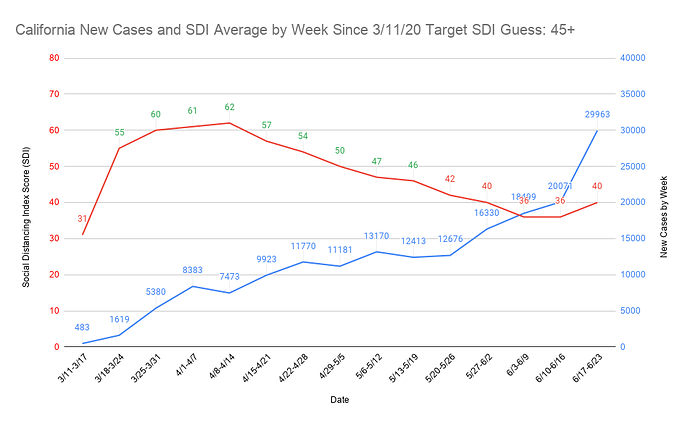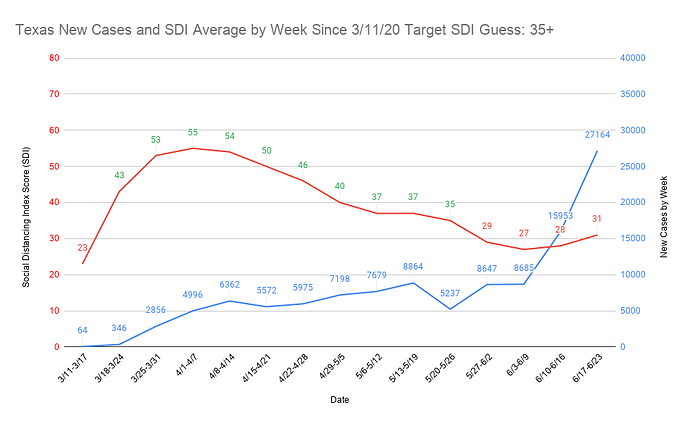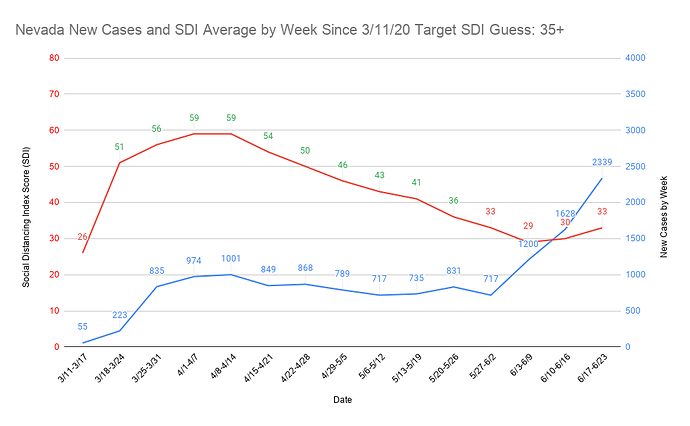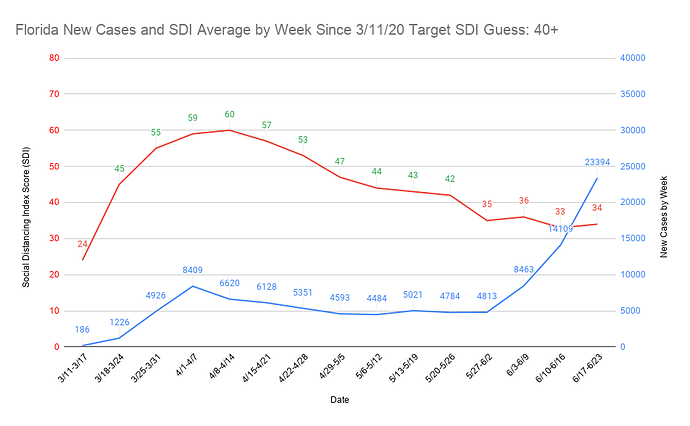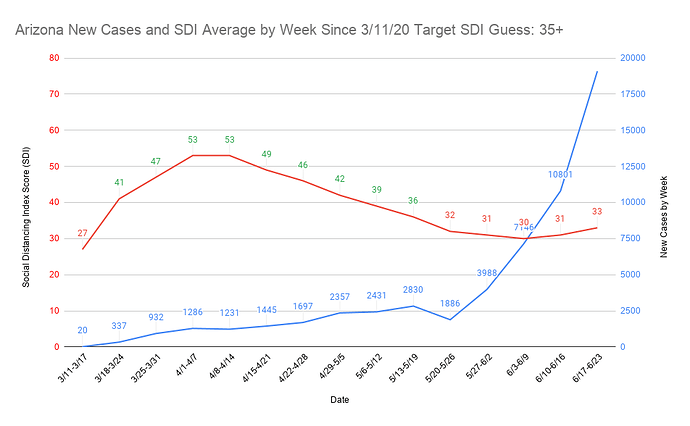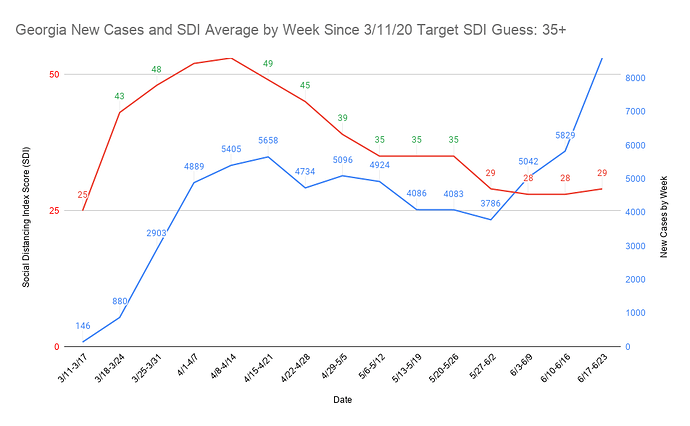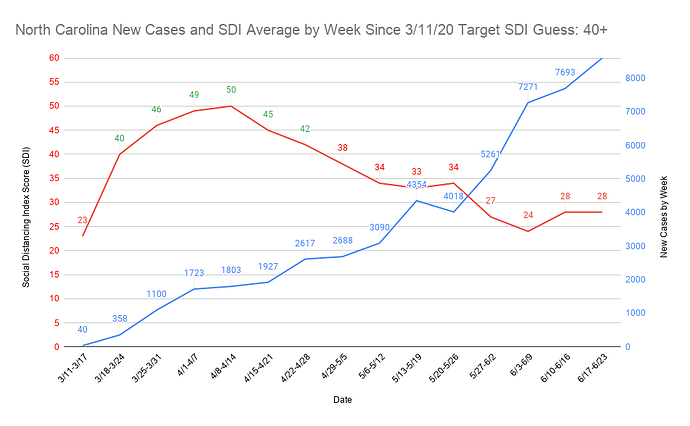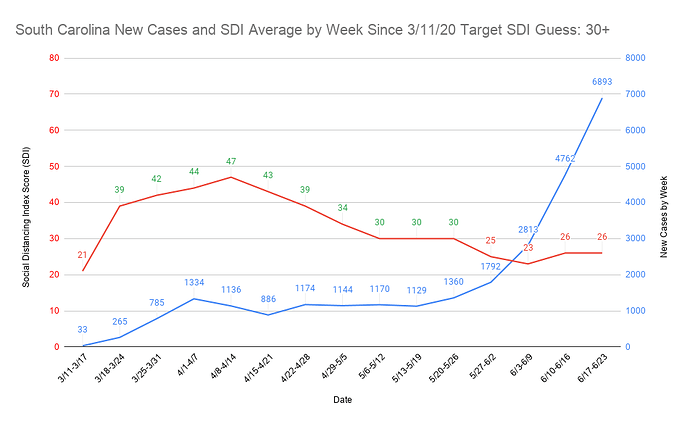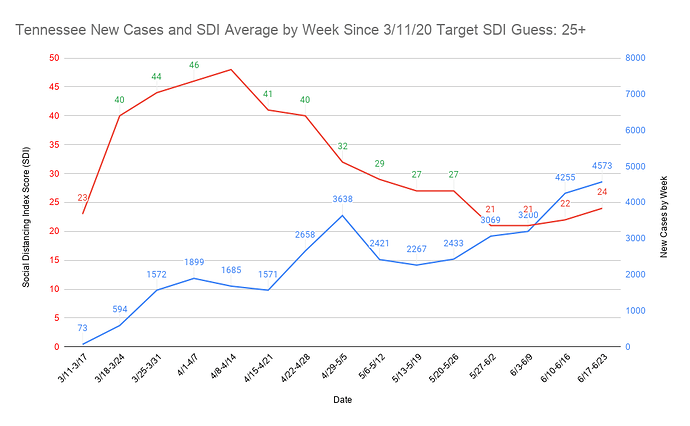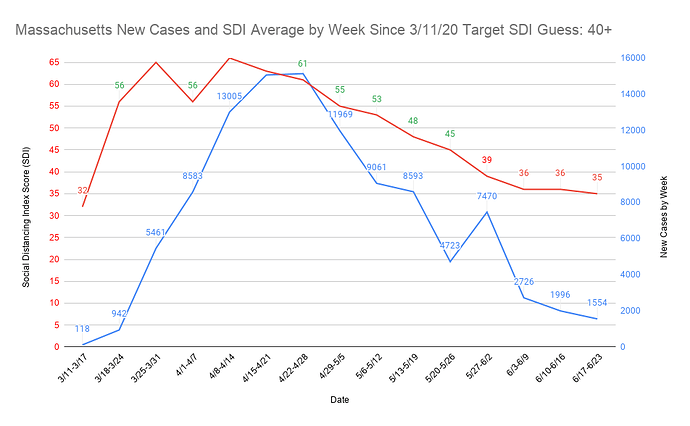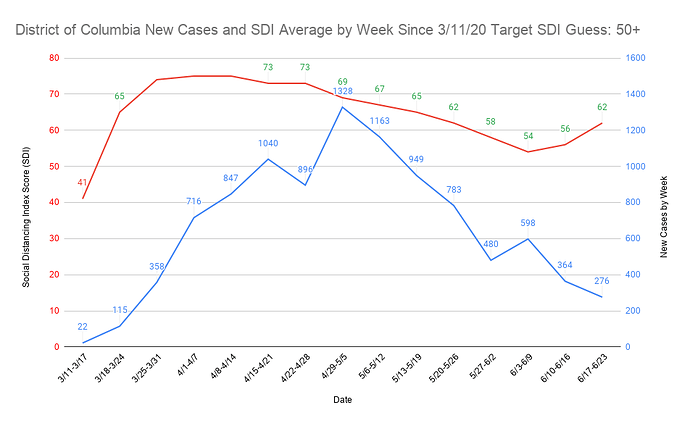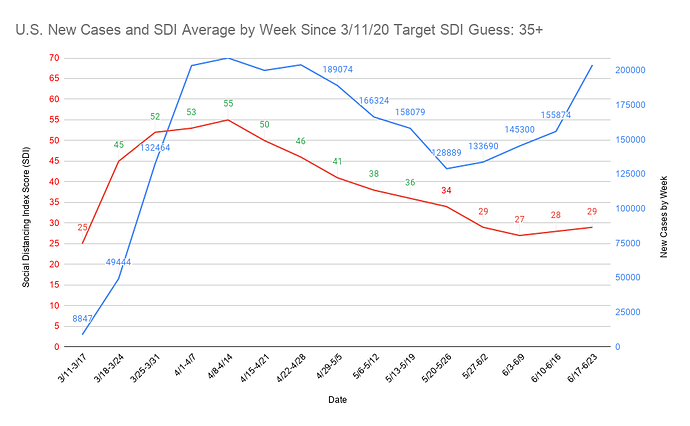Testing is obviously maxed in all the hard hit states. Florida has stories about people waiting in line for hours and hours starting at 1am. When the experts said we needed 20m tests a day capacity maybe we should have listened. It is obvious 500k tests/day nationwide has no chance of being adequate and yet Trump and the goon squad are currently cutting funding for testing sites.
It’s quite an awesome idea to tie in some many factors but at the heart of it, some weighted score of peoples behavior plus some inter-area transmission by travel and density should be able to describe a transmission model that fits the observed spread.
Many things may serve as proxies like cell phone mobility and nun’s SDI term.
With all this stuff the score keeping is always lagging and everything has some average offset to everything else. That’s the tricky part imo.
Bravo
Are you able to split states into regions and/or do it for locales? Like could you look at Houston vs. Dallas, Orlando vs. Miami, etc?
Can we start over and be friends? Good post and I think you are on track even if we disagree about how useful a Jerry Nadler is.
Here are 12 Social Distancing Index score (SDI) average by week and new cases by week graphs tracked since the pandemic was officially declared on March 11. The graphs are current through June 23, and things have obviously gotten much worse since then. In the graph title is what I perceive to be the target SDI a place needs to be above to begin slowing the spread of cases (R0 is not factored in here). It is a guess, but I think an educated one. On the left side is the SDI weekly average, and on the right is the weekly new cases. I made ‘good’ SDI green at each data point, and it’s red anytime it’s below the target SDI. I think you begin to see the rise trend around 14 days after the place falls below the target SDI.
I know you’re trying to put a positive spin on this, but keep in mind that the average time from infection to hospitalization is around 12 days. The average time to symptoms is around 5.7. So there’s ~a week between symptoms (testing) and hospitalization.
Official case numbers from 12 days ago to now:
840
583
612
561
982
1075
1148
905
1005
906
1270
1120
1275 (based on .183 * 6969)
Anyway, my point is you’re probably seeing hospitalizations from the bolded reflected in daily updates now. Expect hospitalizations per day to be relatively flat for the next several days, but discharges are still going to be based on cases that came in when there were 150-300 cases per day being registered. So the hospitals are going to start to take in more and more cases.
That’s pretty awesome. So what is SDI, how is it calculated and where do you get it? I assume the target guess is based on factors such as population density, public transit usage, and climate?
It’s hard to categorize a decaying empire
We are halfway between rotting and decomposed at this point.
I have this data for a number of hot spot counties that I started tracking about 6 weeks or so ago and can now easily graph it out (it would just be comparing two graphs, not on the same graph). SDI only goes down to the county level, so that’s the deepest you’ll be able to get. I wasn’t tracking Orange County, FL, so I think that would be a good one to use for this based on their explosion. The one caveat is the new case data at UMD might be lower than it would be reported in other places, but I’ll be using it due to the county level usefulness.
What you’ll notice when you see these graphs is that places like Dallas County have extremely high SDI as does Miami-Dade. A good hot spot I caught was Palm Beach County (have a friend who lives there so I was curious as to how it was doing). They had extremely high SDI, but right after Memorial Day weekend it was all over and they were hit like a Mack truck. Santa Clara County was having a similar but slower outcome when I was tracking it (I think I’m about two weeks behind on the county level graphs right now). As goofy said Santa Clara was GOAT at SDI and keeping cases down for a long time, but that appears to be over unless there’s been good news since I last tracked it. D.C. is doing an amazing job with SDI which I think is why the most densely populated place in the country has a vanishingly small amount of cases.
I assume this is the SDI that nun is using. The metrics are being calculated by the Maryland Transportation Institute “based on validated computational algorithms and privacy-protected data from mobile devices, government agencies, healthcare system, and other sources.”
The social distancing index is computed from six mobility metrics by this equation: social distancing index = 0.8*[% staying home + 0.01*(100 - %staying home)(0.1% reduction of all trips compared to pre-COVID-19 benchmark + 0.2*% reduction of work trips + 0.4*% reduction of non-work trips + 0.3*% reduction of travel distance)] + 0.2*% reduction of out-of-county trips. The weights are chosen based on share of residents and visitor trips (e.g., about 20% of all trips are out-of-county trips, which led to the selection of a weight of 0.8 for resident trips and 0.2 for out-of-county trips); what trips are considered more essential (e.g., work trips more essential than non-work trips); and the principle that higher social distancing index scores should correspond to fewer chances for close-distance human interactions and virus transmissions.
SDI is the Social Distancing Index score, and it’s at this site (it’s calculation is explained there): https://data.covid.umd.edu/
When I originally tracked SDI, I was just looking for some kind of settling. I thought 40+ SDI would make a difference (similar to how I felt 200 new cases in a day was the flashpoint for a state exploding). Population density plays a huge part in what I think the SDI target needs to be. I started trying to find the trends about 2.5 months ago, but told Dan a couple of weeks ago that I thought my data wouldn’t become useful until about 3 or 4 weeks later for doing real predictions due to it being the first time places had fallen below the target SDI. It looks like it’s happening earlier than expected due to case explosion.
Around here there’s been a lot of speculation about temperature, density, etc. and how it factors in but I still have yet to find anything that seems to explain it better than SDI and governmental response (R0 is for sure playing a factor where SDI effects and/or testing aren’t making sense). Good governmental response and good SDI is the winning combination. Good SDI can mitigate bad governmental response. Nowhere had both bad governmental response and bad SDI other than maybe Arkansas. I think the pandemic is defying every single expectation of how experts believe coronaviruses behave.
There are two other variables I ultimately want to include as actual data points, which are humidity average and population density. Why is Rhode Island killing it? It makes no sense to me other than their massively high testing early on. Same with Delaware (had a great early response) that’s surrounded by hot spots. One would think COVID-19 would do well in cold places, but almost all those places are doing the best (this gets broken with Idaho). The problem is all those places get very hot in the summer which means they might just be lagging.
Everything I’m doing is just guessing based on visualizing trends, but it’s seemed to be fairly close so far in any place that blows up. The graphs are the first time I was able to see it how I wanted without just looking at raw numbers.
Lester Holt MIA from NBC Nightly News.
Probably on vacation but I’ll bet he has COVID.
R0 is essentially a product of SDI and contact tracing and X, where X = the natural factors in the area (density, for example).
SDI is a product of governmental mitigation policies and adherence to them (or going above and beyond).
Re the selective pressure discussion:
-
rugby is correct that diseases becoming less deadly over time frequently reflects human evolution rather than viral evolution
-
while it makes some sense for diseases to evolve to get less deadly over time, there are still plenty of extremely deadly diseases we’ve just forgotten about because of advances in treatment. Smallpox, cholera, dengue fever, typhus etc.
-
from the virus point of view it would be an improvement not to kill anyone but that improvement would be very small. The low death rate and long disease process requiring hospital care provide excellent opportunities for the virus to spread. Lockdown is unlikely to produce a less deadly virus because if such a strain emerged, we could not distinguish it from others, so there is no selective advantage in not provoking lockdown. The selective pressure that lockdown is HUGELY more likely to promote is simply for increased transmissibility, as we’ve already seen with the 614G variant.
If you’re able to figure out a way to tie the two in together so that it becomes a number, it would probably go a long way toward figuring a lot of stuff out (way outside of my pay grade). The last time I did a tracking with Dan’s heat map, I was one day early with almost 90 percent of my predictions of rises. That was when I was basing it on daily SDI instead of weekly SDI average.
47000 and counting today. Certainly Trump is going to roll out his plan to control embers and hotspots now right?
There should be a way to tie SDI shifts to R0 shifts within a location. I don’t think we can tie SDI straight to R0 because it also depends on the other natural factors in the area. An SDI of 40 in Wyoming != an SDI of 40 in California. I’ll look more closely at this.
As I said yesterday:
Take your like again but you’re pissing me off replaying the hits. I probably will only like this 3 or 4 more times.
